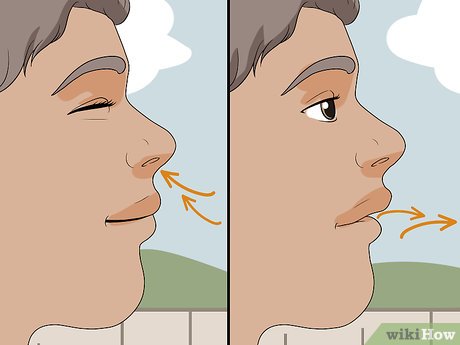How To Run Without Getting Tired Or Breathing Heavily

It’s not uncommon to run out of breath when you’re working out—especially if you’re just getting started with running, coming back from a break, or pushing the pace. If this happens to you, you might be wondering: How can I increase my speed without running out of breath?
Let’s try to making these changes to your running routine:
1. Warm up adequately
Warm up for a minimum of 20 minutes by walking or jogging at a very easy pace. Warming your body for the workout ahead by gradually increasing your heart rate and breathing rate. Sweating is a good indication that your body is warm so use that as a guide, and then gradually begin picking up the pace as you move into your training pace.
2. Check your posture
Keep your torso straight and avoid bending when you run. This will help you breathe more effectively.
3. Focus on deep breathing
Breathe from your abdomen and inhale deeply through your mouth and nose. Abdominal breathing gives your lungs the most room to expand and inhale oxygen. It can also help you avoid annoying side seams . You should feel your abdomen enlarged, not your upper chest. Then slowly and evenly exhale through your mouth.
4. Use your arms to move you forward
Keep your arms at a 90-degree angle when running. Turn your arms from your shoulders. When you pull one arm, pull the other arm forward. This kind of arm exercise will help push your body forward, so your legs don't have to work so hard.
5. Rhythmic breathing method
During running, when the foot falls to the ground at the beginning of exhalation, it will produce the strongest impact, and the stability of the core at this time is also the worst. It is the most vulnerable to injury at this time. The method of rhythmic breathing is to use 3 steps, 1 breath, 2 steps and 1 breath (3:2) for jogging and medium-speed running. When running fast, use 2 steps, 1 breath, 1 step and 1 breath (2:1). When running intermittently or in high-intensity running, use a breathing rhythm of 2 steps, 1 inhalation, 1 step, 1 exhalation, 1 step, 1 inhalation, 1 step, 1 exhalation (2:1:1:1). In this way, it can be ensured that both feet land in a balanced manner when exhaling.
6. Incorporate walk breaks in your running
Short walk breaks allow you a brief moment to recover and may allow you time to catch up if you’re running out of breath. Schedule your walk break intervals before you become breathless. Set a run-walk interval like running for five minutes, walking for one minute. Repeat this sequence for the duration of your run and see if regular walk breaks at set intervals help reduce or delay the onset of breathlessness.
Reference :
https://www.runnersworld.com/runners-stories/a20845181/help-i-get-out-of-breath-easily/
